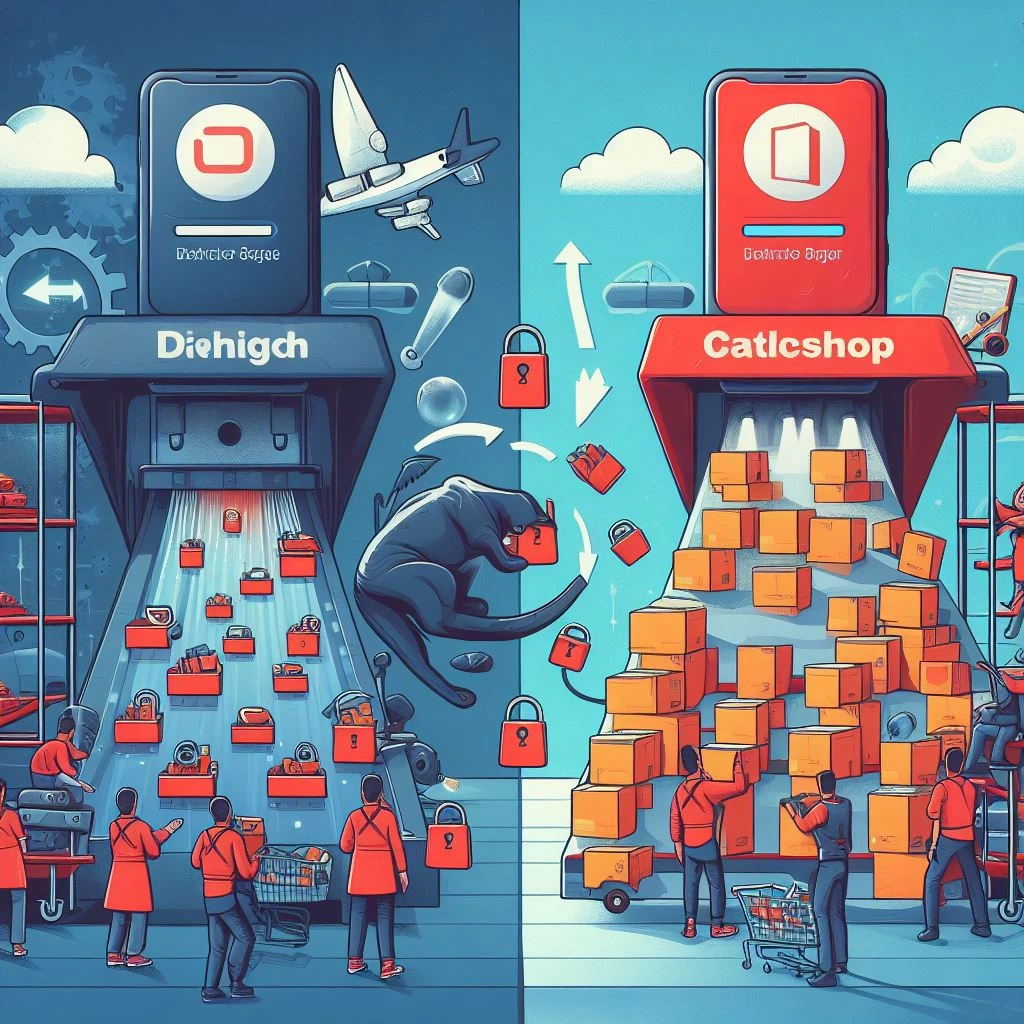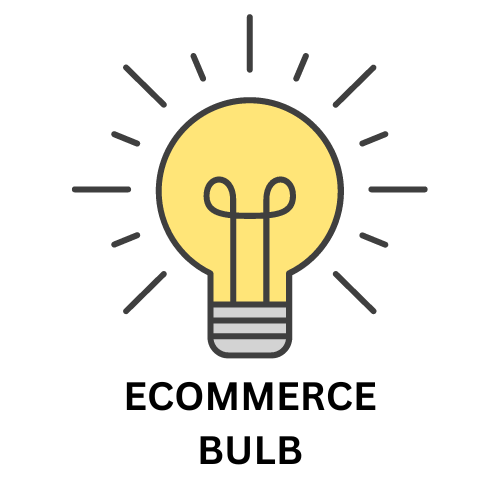
PrestaShop Vs. Shopify? Which is Better eCommerce Platform?
In order to decide which ecommerce platform to use, Shopify vs. PrestaShop. There are many factors that you have to take into consideration. If you want to decide which eCommerce platform to choose, there are many things to consider.
These are some examples of these factors:
- Cost.
- SEO friendliness.
- Page load speed.
- Canonical website URL.
- Indexing Control.
- Customizable HTML capabilities.
- Sitemap Generator.
- Integration with Google Analytics.
- Product Tagging and Categorization.
- Batch Uploading.
- Mobile Optimization.
- Built-in Blogging and Marketing Features.
- Social Sharing Buttons.
- Content Management Capabilities.
- Discount and promotion code tools.
- Easy to use Checkout.
- Reporting tools and custom reports.
- Integration of email marketing tools.
- Multiple payment options.
- Flexibility to add new eCommerce features.
- Exclusive features.
- Cons and pros.
Here we’ll discuss these factors to help you decide which platform is better for you, Prestashop or Shopify. And at the end of the discussion, we’ll recap and make a comparison for the scores of all these points to find out which eCommerce platform has the higher score, so that you’ll have a good view about both of them.
Pricing (Shopify Vs. Prestashop):
Shopify’s Pricing:

In Shopify, the price starts from $32 for the basic plan and goes up to (The Advanced Plan) with a price tag of $399.
Do not forget that, in Shopify, you’ll need to buy apps, themes, and designs. You might also need to purchase some services like a domain name and -in some cases- web hosting services.
Prestashop’s Pricing:
PrestaShop is a popular open-source eCommerce platform that offers many features to help businesses manage their online stores effectively. PrestaShop has the following pricing plans:
- Free plan: It allows you to download and use PrestaShop for free. You can access the essential features of the platform, such as creating and managing products, customers, orders, and payments. However, you can’t use advanced features like custom themes, modules, or integrations. You will also have to pay for hosting and domain names separately.
- Subscription plan: It starts from $22 per month and gives you access to all the features of PrestaShop. You can customize your online store with various themes, apps, and plugins. You can also create payment gateways, shipping methods, and marketing campaigns. You will also get regular updates and security patches from PrestaShop.
- Enterprise plan: This plan is for large businesses that need more support and scalability. It starts from $299 per month and includes the features of the subscription plan plus dedicated support, custom development, data migration, backup and restore, and priority access to new versions.
Shopify or Prestashop which is better in pricing?
While Shopify’s pricing is straightforward, PrestaShop’s costs can vary more significantly depending on your hosting provider, domain name registrar, and module choices. However, PrestaShop tends to be the more cost-effective option for smaller businesses, especially those with technical expertise.
SEO Capabilities (Shopify Vs. Prestashop):

Shopify’s SEO Capabilities:
Shopify offers built-in SEO features to optimize your website for search engines. Here are some of the key capabilities:
1. Automatic Sitemaps and XML Sitemaps: Shopify automatically generates sitemaps for your store, making it easier for search engines to crawl and index your site.
2. URL Structure Editing: You can edit your eCommerce Store URL structure, which can help improve SEO.
3. URL Optimization: Shopify allows URL optimization to enhance eCommerce store visibility in search engine results.
4. Meta Tags Support: You can add meta tags to your store’s content to improve your site’s purpose in search engine results.
5. Canonical Tags: Shopify uses canonical tags to prevent duplicate content from negatively impacting an online store’s SEO.
6. SSL Certification: Shopify provides SSL certification for all stores, which can improve a website’s ranking in search results.
7. Structured Data: Shopify supports structured data, making it easier for search engines to understand the content on your site.
8. Mobile Friendly: Shopify themes are mobile-friendly, a factor that search engines consider when ranking sites.
In addition to these built-in features, Shopify offers SEO Manager, a handy app that helps optimize your website for search engines. It provides features like meta tags, structured data, and even a Google PageSpeed Insights score.
Prestashop’s SEO capabilities:
PrestaShop is a popular eCommerce platform with many features to help businesses manage their online stores effectively. However, to get the most out of it & achieve a successful SEO performance, you need to optimize your PrestaShop store for search engines and visitors. Here are some of the SEO capabilities that PrestaShop provides:
– Optimization modules: PrestaShop has several modules that can help you improve the SEO of your site, such as SEO Expert, SEO Images, Pack SEO Ultimate, and more. These modules can help you create and optimize title tags, meta descriptions, URLs, image alt tags, structured data, XML sitemap, and robots.txt files.
– Responsive themes: PrestaShop also offers many themes that are responsive and mobile-friendly. Responsive themes can help you create a user-friendly and attractive website that can adapt to different screen sizes and devices.
– Content optimization: PrestaShop allows you to customize your online store with various content options, such as product descriptions, product images, product reviews, blog posts, etc. You should optimize your content for your target keywords and audience by using clear and concise language, relevant images and videos, catchy headlines and subheadings, bullet points and lists, etc.
Why Shopify Over Prestashop in SEO capabilities?
Shopify is the better platform for SEO if you are looking for a platform that is easy to use and has many built-in SEO features. However, if you are comfortable with more technical SEO work, PrestaShop eCommerce platform is a good choice.
Read More: Why Shopify is better than Volusion as an eCommerce Platform?
PageLoad Speed (Shopify Vs. Prestashop):

Shopify’s Page Load Speed:
Shopify provides several tools and techniques to optimize the page load speed of your online store:
1.Automatic Sitemaps and XML Sitemaps: Shopify automatically generates sitemaps for your store, making it easier for search engines to crawl and index your site.
2. URL Structure Editing: You can edit your store’s URL structure, which can help improve SEO.
3. URL Optimization: Shopify allows URL-optimized visibility enhancement in search engine results.
4. Meta Tags Support: You can add meta tags to your store’s content to improve how your website shows in search engine results.
5. Canonical Tags: Shopify uses canonical tags to prevent duplicate content from negatively impacting an eCommerce website’s SEO.
6. SSL Certification: Shopify provides SSL certification for all stores, which can improve a website’s ranking in search results.
7. Structured Data: Shopify supports structured data, making it easier for search engines to understand the content on your site.
8. Mobile Friendly: Shopify themes are mobile-friendly, a factor that search engines consider when ranking sites.
Prestashop’s Page Load Speed:
There are many ways to improve the page load speed of your PrestaShop website, such as:
– Using the latest PHP versions: PrestaShop recommends using PHP 8.1 or higher when possible, as it offers better performance and compatibility than older versions.
– Enabling the Combine, Compress and Cache Settings: These settings allow you to reduce the size of your CSS, JavaScript, and HTML files by combining them into one file each, compressing them with gzip or Brotli algorithms and caching them on the server or browser. You can enable these settings by going to Advanced Parameters > Performance > CCC in your back office.
– Minifying your code: Minifying your code means removing unnecessary spaces, comments, characters, and symbols from your code files. It can reduce the file size and improve the loading speed of your web pages. You can minify your code using tools like PHP Minifier or HTML Minifier.
– Optimizing your images: Images are one of the contributors to web page size and loading time. Therefore, you should optimize your images by using appropriate formats (such as JPEG or WebP), reducing their resolution or quality (without losing details), compressing them with tools like TinyPNG or ImageOptim, and lazy loading them (meaning they are only loaded when they are in view).
– Using a CDN: A CDN (Content Delivery Network) is a network of servers that deliver your web content to the user according to their geographic location. It can reduce the distance between users and servers & it can improve the loading speed of your web pages. You can use services like Cloudflare or Akamai to set up a CDN for your PrestaShop website.
Shopify or Prestashop, which is better in Page Load Speed?
Shopify has a faster page load speed than PrestaShop on average. Shopify is a fully-hosted platform that provides hosting, security, updates, and maintenance of an online store. You only need a monthly subscription fee to access the software and its features. Shopify also provides a content delivery network (CDN) to help your images load faster.
Canonical Website URL (Prestashop Vs. Shopify):

What is Canonical Website URL & Why It’s Important?
A canonical URL is a way of telling search engines which version of a web page is the preferred one to index and display in search results. It can help avoid duplicate content issues and improve SEO performance. PrestaShop and Shopify have features that allow you to set up and manage canonical URLs for your online store, but there are some differences between these two eCommerce platforms.
Canonical Website URL (Prestashop Vs. Shopify), which is better?
Shopify is the easier option, as it does not require you to edit files. However, PrestaShop gives you more control over how your canonical URLs are set.
Indexing Control (Shopify Vs. Prestashop):

What is Indexing Control? & Why It’s Important?
Indexing control is the ability to control how search engines crawl and index your website. It can help you optimize your SEO performance and avoid duplicate content issues. Both Shopify and PrestaShop have features that allow you to set up and manage indexing control for your online store, but there are some differences.
Shopify Vs. Prestashop, which eCommerce Platform has Better Indexing Control?
The main advantage of Shopify is that it simplifies and automates creating and managing indexing control for you. You do not need to worry about technical details or SEO performance. The main advantage of PrestaShop is that it gives you more freedom and options to set up your indexing control according to your preferences and needs. You can customize your robots.txt file or meta tags to suit a given situation.
Customizable HTML Capabilities (Shopify Vs. Prestashop):

Shopify’s Customizable HTML Capabilities:
– Shopify allows users to add custom HTML to their website.
– You can easily customize themes with HTML, CSS, JavaScript, JSON, and Liquid, Shopify’s open-source markup language.
– Shopify does not allow custom HTML in their themes.
– You can add a custom HTML section to your Shopify store.
– Shopify uses the Algolia Search and Discovery app for indexing.
Prestashop’s Customizable HTML Capabilities:
PrestaShop offers greater flexibility for customizing HTML code. You have direct access to the theme files and can modify them directly within the PrestaShop admin panel or through an FTP client. This allows for more granular control over the store’s design and functionality.
Which has Better Customizable HTML Capabilities, Shopify or Prestashop?
- For beginners or those with limited coding knowledge, Shopify’s theme editor provides a user-friendly interface for basic customizations.
- For experienced developers or those requiring extensive customization, PrestaShop’s direct HTML access offers greater flexibility and control over the store’s design and functionality.
Sitemap Generators (Shopify Vs. Prestashop):

Key differences between Shopify & Prestashop in Sitemap Generators:
- Ease of Use: Shopify’s sitemap generator is simpler to use and requires minimal effort. PrestaShop’s sitemap generator requires submitting the sitemap manually to search engines.
- Automation: Shopify automatically generates and submits sitemaps when needed. PrestaShop requires manual generation and submission.
- Customizable Options: Shopify’s sitemap generator has limited customization options. PrestaShop offers more control over sitemap generation, allowing you to specify frequency, include images, and exclude specific pages.
Which eCommerce Platform has the Better Sitemap Generators, Shopify Vs. Prestashop?
- For those seeking a simple and automated solution, Shopify’s sitemap generator is suitable.
- For users who prefer more control over sitemap generation and customization, PrestaShop’s sitemap generator offers greater flexibility.
Read More: Is Shopify SaaS (Software as a Service) or PaaS (Platform as a Service)?
Integration With Google Analytics (Shopify Vs. Prestashop):

What is the difference between Shopify & Prestashop in terms of Google Analytics Integration?
- Ease of Setup: Shopify’s integration is built-in and requires minimal configuration. PrestaShop requires installing a module for integration.
- Automatic Tracking: Shopify automatically adds the tracking code to your theme. PrestaShop may require manual configuration of the tracking code in the module settings.
- Additional Features: Some PrestaShop modules offer advanced features like enhanced tracking, cross-domain tracking, and eCommerce-specific analytics.
What eCommerce Platform to Choose for a Better Integration with Google Analytics?
The choice between Shopify and PrestaShop for Google Analytics integration depends on your preference for ease of setup and additional features.
- For those seeking a simple and built-in solution, Shopify’s integration is suitable.
- For those seeking advanced tracking features, PrestaShop’s modules offer greater flexibility.
Read More: Is Weebly Better than Shopify as an eCommerce Platform?
Product Tagging and Categorization (Shopify Vs. Prestashop):

What is Product Tagging & categorization?
Product tagging and categorization allow you to organize and display your products on your online store. They can help you improve your site navigation, user experience (UX), and SEO performance.
What is the Main Differences Between Shopify & Prestashop in terms of Product Tagging & Categorization?
- Ease of Use: Shopify’s tagging and categorization system is simple and more user-friendly, making it suitable for beginners. PrestaShop’s system offers more control but may be more challenging to navigate for non-technical users.
- Customization: Shopify’s categorization structure is less customizable than PrestaShop’s. PrestaShop allows for creating multi-level category structures and assigning multiple parent categories to products.
- Flexibility: Shopify’s tagging system is flexible. It allows you to tag products with descriptive keywords and phrases. PrestaShop’s tagging system is more structured, requiring specific tag names and formats.
Which eCommerce Platform provides better Product Tagging & Categorization (Shopify Vs. Prestashop)?
- Shopify’s simplified tagging and categorization system is sufficient for smaller stores with a limited product range.
- For larger stores with a complex product catalogue and the need for granular organization, PrestaShop’s flexible categorization system is better suited.
Read Further: SquareSpace Vs. Shopify, A Comprehensive Comparison between the two eCommerce Platforms
Batch Uploading (Prestashop Vs. Shopify):

What is Batch Uploading and Why It’s Important?
Batch uploading is a feature that allows you to upload multiple products or images to your online store at once. It can save you time and effort, especially if you have a large inventory or a lot of product variations.
Why Prestshop Over Shopify in Batch Uplaoding?
The main advantage of PrestaShop is that it gives you more control and flexibility over your product data and images. You can customize your CSV file and image settings to suit your needs and preferences. The main advantage of Shopify is that it simplifies and automates the uploading and manages your product data and images. You do not need to worry about technical details or compatibility issues.
Mobile Optimization (Shopify Vs. Prestashop):

What is Mobile Optimization and why it’s Important?
Mobile optimization is the process of designing and developing your website to make it responsive and user-friendly on mobile devices, such as smartphones and tablets. Mobile optimization can help you improve your site performance, user experience, and SEO rankings.
How to Choose the Right Platform in terms of Mobile Optimization, Prestashop Vs. Shopify?
- For businesses that prioritize ease of use and want a mobile-friendly store without extensive technical work, Shopify is the better choice.
- For businesses with more technical expertise and a willingness to invest time and effort in customization, PrestaShop can be a cost-effective option for mobile optimization.
Read Further: Does Adobe Commerce (Magento) Really Worth it? How it is Different than Shopify?
Built-in Blogging & Marketing Features (Prestashop Vs. Shopify):

Built-in blogging and marketing features allow you to create and manage your blog and promote your online store to your target audience.
PrestaShop and Shopify offer built-in blogging and marketing features. Here are some of the main points of comparison:
– Blogging: Shopify has a built-in blog CMS (Content Management System) to help you run and manage your blog. Shopify’s blog editor lets you change typeface, modify headers, include images, add links, and more. Utilizing these options, you can publish optimized blog content that increases exposure and revenue for your business. PrestaShop doesn’t have a built-in blog CMS, but you can use modules like PrestaBlog or Blog for PrestaShop to add blog functionality to your online store. These modules allow you to create and edit blog posts, categories, and comments, and integrate with social media and SEO tools.
– Marketing: Shopify offers a variety of marketing features to help you attract and retain customers, such as email marketing, social media integrations, discount codes, gift cards, loyalty programs, and more. You can access these features from the Marketing section of your Shopify admin, or use apps from the Shopify app store to enhance your marketing capabilities. PrestaShop also offers a variety of marketing features to help you attract and retain customers, such as email marketing, social media integrations, discount codes, vouchers, loyalty programs, and more. You can access these features from the Modules section of your PrestaShop back office, or use modules from the PrestaShop Add-ons Marketplace to enhance your marketing capabilities.
The main advantage of Shopify is that it simplifies and automates the process of creating and managing your blog and marketing campaigns. You do not need to worry about technical details or compatibility issues. The main advantage of PrestaShop is that it gives you more freedom and options to set up your blog and marketing campaigns according to your preferences and needs. You can customize your blog and marketing modules to suit your specific situation.
As you can see, both PrestaShop and Shopify have their pros and cons when it comes to built-in blogging and marketing features. The best choice for you will depend on your specific goals, budget, skills level, and preferences. If you are looking for a simple and easy solution that does not require much technical knowledge or maintenance, Shopify might be a good option for you. If you are looking for a more customizable and flexible solution that allows you to edit your site’s code and design, PrestaShop might be a better option for you.
Read More: Is WiX a Better eCommerce Platform than Shopify?
Social Sharing Buttons Availability (Prestashop Vs. Shopify):

Is Shopify Better than Prestashop in Social Media Sharing Buttons Availability?
Short answer is YES!
- Shopify offers a wide variety of social sharing buttons. It means that you can choose to share your products and promotions on a wide range of social media platforms.
- Prestashop’s social sharing buttons are more customizable than Shopify’s. It means that buttons are customizable to match your store’s branding, this is an advantage for Prestashop that will give you more control.
- Shopify offers several social sharing widgets that you can add to your store, such as a social sharing bar and a social sharing button fly-out. These widgets can help you increase the visibility of your social sharing buttons and encourage your visitors to share your products and promotions with their friends and followers.
Content Management Capabilities (Prestashop Vs. Shopify):

What is the Importance of Content Management Capabilities?
Content management capabilities are the ability to create, edit, and manage the content of your website, such as text, images, videos, etc. Content management capabilities can help you improve your site appearance, user experience, and SEO performance. Both PrestaShop and Shopify offer content management capabilities, but there are some differences between them. Here are some of the main points of comparison:
Content Management Capabilities Comparison (Shopify Vs. Prestashop):
Content Editor:
Shopify provides a user-friendly content editor that allows you to add and edit the content of your web pages, such as titles, headings, paragraphs, images, videos, etc. You can use the rich text editor to format your content or switch to the HTML editor to access the code.
You can also use the theme editor or the code editor to customize your theme and layout. PrestaShop also provides a content editor that allows you to add and edit the content of your web pages, such as titles, headings, paragraphs, images, videos, etc. You can use the WYSIWYG (What You See Is What You Get) editor to format your content or switch to the source code editor to access the code. You can also use the theme configurator or the PHP programming language to customize your theme and layout.
Content Types:
Shopify allows you to create different types of content for your online store, such as products, collections, blogs, pages, menus, and sections. You can access these content types from the Online Store section of your Shopify admin, or use apps from the Shopify app store to add more content types and features. PrestaShop also allows you to create different types of content for your online store, such as products, categories, CMS pages, modules, and hooks. You can access these content types from the Catalog and Design sections of your PrestaShop back office, or use modules from the PrestaShop Add-ons Marketplace to add more content types and features.

Content Management:
Shopify simplifies and automates the process of creating and managing your content for you. You do not need to worry about technical details or compatibility issues. Shopify also provides a content delivery network (CDN) to help your images load faster. PrestaShop gives you more control and flexibility over your content. You can use modules to add more functionality and integrations to your content, such as SEO, social media, analytics, etc. However, you also need to take care of the installation, updates, and maintenance of your modules and content.
Which has Better Content Delivery, Prestashop or Shopify?
As you can see, both PrestaShop and Shopify have their pros and cons when it comes to content management capabilities. The best choice for you will depend on your specific goals, budget, skills level, and preferences. If you are looking for a simple and easy solution that does not require much technical knowledge or maintenance, Shopify might be a good option for you. If you are looking for a more customizable and flexible solution that allows you to edit your site’s code and design, PrestaShop might be a better option for you.
Read Further: Can WooCommerce Beat Shopify as an eCommerce Platform?
Discounts & Promotion Codes (Prestashop Vs. Shopify):

Shopify’s Discount & Promo Codes Capabilities:
Shopify’s discount management system is integrated directly into the platform, making it easy to create and manage discounts for products, categories, or entire orders. You can set up various types of discounts, including:
- Percentage discounts: Reduce the price of products by a specific percentage.
- Fixed amount discounts: Offer a fixed reduction in price for products or orders.
- Free shipping discounts: Provide free shipping for orders above a certain amount.
- Buy one, get one (BOGO) discounts: Offer a discounted price for purchasing multiple items.
Shopify also allows you to schedule discounts to run at specific times or for limited periods. You can also generate unique discount codes to share with customers via email, social media, or other promotional channels.
Prestashop’s Discount & Promo Codes Capabilities:
PrestaShop’s discount management system involves utilizing modules from the PrestaShop Addons marketplace. Popular modules like “Discount Rules” or “Advanced Discount Rules” provide user-friendly interfaces for creating and managing discounts. These modules often offer advanced features like:
- Customer-specific discounts: Apply discounts to specific customer groups or individual customers.
- Category-based discounts: Create discounts that apply to products within specific categories.
- Product-specific discounts: Apply discounts to certain products or bundles of products.
- Manufacturer-based discounts: Offer discounts on products from specific manufacturers.
PrestaShop’s modules may require additional configuration and integration with your store, but they provide greater flexibility and customization for discount strategies.
Which has More Comprehensive Discount & Promo Codes?
Shopify offers a more streamlined and user-friendly approach to discount management, making it suitable for businesses seeking a straightforward way to implement discounts.
PrestaShop provides greater flexibility and customization through modules, but it may require more technical expertise to set up and manage complex discount strategies.
For businesses prioritizing ease of use and a simple discount management system, Shopify is the better choice. Keen tech-savvy users with a tendency for granular control over discount strategies might consider PrestaShop because it offers more customization options.
Read Further: Can BigCommerce Outperform Shopify as an eCommerce Platform?
Easy to Use Checkout (Shopify Vs. Prestashop):

Shopify’s Easy-to-Use Checkout:
Shopify’s checkout process is known for its simplicity and ease of use. The checkout page is designed to be visually appealing and intuitive, guiding customers through the payment process with minimal steps. Shopify’s checkout features include:
- One-page checkout: Customers can complete the entire payment process on a single page, reducing the need to navigate multiple pages.
- Guest checkout: Customers can make purchases without creating an account, making it convenient for one-time shoppers.
- Multiple payment options: Shopify supports countless payment gateways, including popular options like PayPal, Stripe, and Amazon Pay.
- Saved payment information: Customers can save their payment information for faster checkout in future purchases.
Prestashop’s Easy-to-Use Checkout:
PrestaShop’s checkout process is also user-friendly, but it offers more customization options when compared to Shopify. You can modify the checkout layout, add or remove fields, and integrate with various payment gateways. PrestaShop’s checkout features include:
- Multi-step checkout: Customers proceed through a series of steps, providing a more structured checkout experience.
- Account registration options: Customers can create an account during checkout or proceed as a guest.
- Payment gateway integration: PrestaShop supports a variety of payment gateways, including popular options like PayPal, Stripe, and Authorize.Net.
- Customizable checkout fields: You can modify the fields displayed during checkout to collect specific customer information or streamline the process.
Which has Easier to Checkout Process, Shopify or Prestashop?
Shopify’s checkout is easier to use than Prestashop, with its intuitive design and streamlined one-page process. PrestaShop’s checkout is more flexible for customization and payment gateway integration, but it may require more technical expertise to set up and manage.
For businesses prioritizing a simple and user-friendly checkout experience for customers, Shopify is the better choice. For Tech-savvy users who want greater control over the checkout process, PrestaShop offers more customization options.
Read More: A Complete Guide to Choose between Volusion & Shopify as an eCommerce Platform.
Reporting Tools and Custom Reports (Shopify Vs. Prestashop):

Shopify’s built-in reporting tools are more user-friendly and comprehensive, making them suitable for businesses that need access to a wide range of pre-built reports and the ability to create custom reports without extensive technical expertise. PrestaShop’s reporting capabilities are more limited in the default version, but they can be expanded with additional modules, providing more flexibility for businesses with specific reporting needs.
For businesses prioritizing ease of use and comprehensive reporting without additional configuration, Shopify is the better choice. For those with technical expertise and a desire for granular control over their reporting, PrestaShop offers more customization options through modules.
Integration of Email Marketing Tools (Shopify Vs. Prestashop):

Shopify’s Integration with Email Marketing Tools:
Shopify offers seamless integration with various email marketing tools to help you effectively engage with your customers. Here are some popular email marketing tools to integrate with Shopify:
- Mailchimp: One of the most widely used email marketing platforms, Mailchimp offers a user-friendly interface and advanced features like audience segmentation and automation.
- Klaviyo: A powerful email marketing tool specifically designed for ecommerce businesses. It enables targeted campaigns based on customer behaviour and purchase history.
- Constant Contact: Ideal for small businesses, Constant Contact provides easy-to-use email templates and automation tools to create professional-looking emails.
- HubSpot: A comprehensive marketing platform that includes email marketing capabilities. It offers advanced segmentation, personalization, and automation features.
- Omnisend: A platform specifically designed for ecommerce businesses, Omnisend provides pre-built email templates, automated workflows, and integrations with multiple marketing channels.
To integrate these tools with Shopify, you can visit the Shopify App Store and search for the specific email marketing tool you want to use. From there, you can install the app and follow the steps to connect it with your Shopify store.
Prestashop’s Integration with Email Marketing Tools:
PrestaShop also offers the option to integrate with popular email marketing tools through modules available on the PrestaShop Addons marketplace. These modules provide similar functionalities to Shopify Email, such as:
- Customer data synchronization: Synchronize customer data from your PrestaShop store to your email marketing platform.
- Email campaign creation: Create and design email campaigns using the email marketing platform’s interface.
- Audience segmentation: Segment your customer list based on purchase history, demographics, and other factors for targeted campaigns.
- Email performance tracking: Track open rates, click-through rates, and conversion rates for your email campaigns within the email marketing platform.
Which has Better Integration with Email Marketing Tools, Prestashop Vs. Shopify?
The main advantage of Shopify is that it simplifies and automates the process of creating and managing your reporting tools and custom reports. You do not need to worry about technical details or compatibility issues. The main advantage of PrestaShop is that it gives you more control and flexibility over your reporting tools and custom reports. You can use modules to add more functionality and integrations to your reporting tools and custom reports, such as SEO, social media, analytics, etc.
Multiple Payment Options (Prestashop Vs. Shopify):

Does Shopify Offer More Payment Options than Prestashop?
Yes, Shopify offers a wide range of payment options, more than that of Prestashop, including:
- Credit and debit cards: Accept payments from all major credit and debit cards, including Visa, Mastercard, American Express, and Discover.
- Digital wallets: Accept payments from popular digital wallets, such as PayPal, Apple Pay, and Google Pay.
- Buy now, pay later (BNPL): Offer BNPL options, such as Affirm and Klarna, to allow customers to split their purchases into instalments.
- Bank transfers: Accept bank transfers from customers who prefer this payment method.
- Cash on delivery (COD): Offer COD for customers who prefer to pay in cash upon delivery.
Shopify also allows you to connect with multiple payment gateways, providing flexibility in choosing the payment providers that best suit your business needs and customer preferences.
Flexibility to Add New eCommerce Features (Prestashop Vs. Shopify):

Shopify offers greater ease of use and a user-friendly interface for adding new features through its App Store, making it suitable for businesses with limited technical expertise. PrestaShop provides more flexibility for customization and integration with specific third-party services, but it requires more technical knowledge to manage the module ecosystem effectively.
Exclusive Features (Prestashop Vs. Shopify):

Shopify’s Exclusive Features:
- Abandoned cart recovery: Shopify allows you to send abandoned cart emails to customers who have abandoned their carts. This can help you to recover lost sales.
- Purchase funnel analytics: Shopify provides you with detailed analytics about your purchase funnel. This information can help you to improve your conversion rate.
- Shopify POS: Shopify POS (point of sale) allows you to sell your products and services in person. This is a great option for businesses that have both an online and offline presence.
- Third-party commerce integrations: Shopify integrates with a variety of third-party commerce platforms, such as Amazon and eBay. This allows you to sell your products on multiple channels.
Prestashop’s Exclusive Features:
– Live Configuration: PrestaShop allows you to customize your theme easily via the built-in Live Configurator. You can change the colours, fonts, layouts, and other theme elements without coding skills.
– Multi-store and Multi-language: PrestaShop enables you to create and manage multiple online stores from a single back office. You can also offer your products in different languages and currencies to reach a global audience.
– Category Tree Generator: PrestaShop provides a module that allows you to create unlimited levels of product categories automatically. You can generate a logical and intuitive site structure for your products based on their attributes, such as name, price, brand, etc.
– Advanced Coupons: PrestaShop offers a module that allows you to create and manage complex and flexible discount and promotion codes. You can set up many conditions and rules, such as minimum purchase amount, customer group, product category, etc.
Market Share (Prestashop Vs. Shopify):

- Shopify: Shopify holds a dominant position in the eCommerce platform market, with an estimated market share of 21.1%. Its popularity stems from its user-friendly interface, extensive app ecosystem, and scalability for growing businesses.
- PrestaShop: PrestaShop holds a respectable market share of 0.35%, making it a significant player in the open-source eCommerce platform segment. Its appeal lies in its open-source nature, giving developers greater control over customization and integration.
CONS Of Prestashop Vs. Shopify:

Cons of Shopify:
- Limited customization.
- Transaction fees.
- App costs.
- Limited support for B2B commerce.
Cons of Prestashop:
- Limited Scalability.
- Unprofessional design for low-budget online stores.
- Poor Support.
- Technical Skills are required.
BuiltWith.com Data (Prestashop Vs. Shopify):

As of November 2023, more than 4.7 million website use Shopify as eCommerce platform according to Builtwith.com, while more than 250 thousand eCommerce website use Prestashop technology.
Hidden Charges & Fees (Prestashop Vs. Shopify):

Shopify’s Hidden Charges & Fees:
Unless you use Shopify Payments, which is the payment gateway of Shopify, they’ll charge transaction fees when utilizing other payment gateways.
Transaction costs range from 0.5% to 2%. Shopify Payments is only available in a few countries and regions, and the fees range from 2.4% to 2.9% + 30 cents for each transaction.
Shopify has a huge and diverse app store with over 6,000 apps that can assist you in adding and improving various features for your online business. Many apps are not free and may impose monthly subscriptions, one-time payments, or usage-based costs. Some applications may need you to upgrade your Shopify plan to use their features.
Shopify has plans ranging from $29 to $299/month to meet demands and budgets. The cost reflects the annual payments. If you pay monthly, you will pay more. The Basic Shopify package, for example, costs $29 per month if paid annually, but $35 per month if paid monthly.
Prestashop’s Hidden Charges & Fees:
Hosting Costs: While PrestaShop itself is free to use, you’ll need to pay for hosting services to make your online store accessible to customers. Hosting costs can vary depending on the provider, chosen plan, and traffic volume.
Premium Modules and Themes: PrestaShop’s vast module ecosystem includes many free and paid modules. While free modules can extend functionality, premium modules often offer advanced features and customization options, incurring additional costs. Similarly, premium themes can provide a more professional and visually appealing storefront.
Developer Fees: For complex customizations or integrations, you may need to hire a PrestaShop developer. Developer fees can vary depending on the scope of work, experience level, and location of the developer.
Payment Gateways: Integrating payment gateways into your PrestaShop store may involve transaction fees or monthly charges, depending on the chosen gateway. These fees can affect your overall profit margins.
Maintenance and Security: Ongoing maintenance and security updates are essential for keeping your PrestaShop store running smoothly and protected from vulnerabilities. If you don’t have in-house technical expertise, you may need to pay for maintenance services or dedicated security solutions.
Third-party Integrations: If you need to integrate PrestaShop with specific third-party services, such as shipping carriers, accounting software, or CRM systems, there may be additional fees or subscription costs associated with those services.
Updates and Upgrades: PrestaShop releases regular updates and upgrades to address security vulnerabilities, and bug fixes, and introduce new features. While core updates are free, you may need to pay for professional assistance in implementing major upgrades or resolving compatibility issues.
Conclusion (Comparison Table for Prestashop Vs. Shopify):
As we can see from the detailed comparison between these two platforms (Shopify Vs Prestashop) that the overall score for Shopify is better than Prestashop’s.
Note that the comparison was done with eCommerce and online business in mind.
I hope this could give you the required insight to choose which eCommerce Platform to use for your future projects!
Here is the full comparison between Shopify & Prestashop eCommerce platforms:
| eCommerce Platform | Shopify | Prestashop |
|---|---|---|
| Price | 7 | 8.1 |
| SEO Friendliness | 7.5 | 7.5 |
| Page Load Speed | 8.5 | 8 |
| Canonical Website URL | 9 | 8.8 |
| Indexing Control | 8.5 | 8.2 |
| Customizable HTML capabilities | 9 | 8.7 |
| Sitemap Generator | 9 | 9 |
| Integration With Google Analytics | 7.5 | 9.2 |
| Product Tagging & Categorization | 6.5 | 6.7 |
| Batch Uploading | 7 | 7.7 |
| Mobile Optimization | 9 | 8.9 |
| Built-in Blogging & Marketing Features | 7 | 6.7 |
| Social Sharing Buttons | 9 | 7.7 |
| Content Management Capabilities | 8 | 8 |
| Discount & Promo Code Tools | 9 | 8.6 |
| Easy to Use Checkout | 9.5 | 9.2 |
| Reporting Tools & Custom Reports | 8.5 | 8.1 |
| Integration of Email Marketing Tools | 9 | 8.9 |
| Multiple Payment Options | 9 | 8.2 |
| Flexibility to Add New eCommerce Features | 9 | 9.3 |
| Exclusive Features | 9 | 9 |
| Market Share | 9.5 | 9 |
| CONS & PROS | 8 | 8 |
| Builtwith.com Data Index | 9.5 | 8.9 |
| Hidden Fees & Charges | 7.5 | 6.1 |
| Overall Assessment (Average) | 8.4 | 8.26 |

